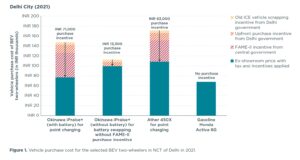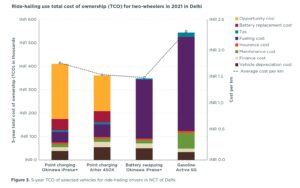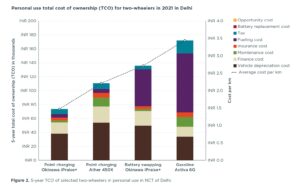The Total Cost of Ownership of EV’s in India is lowest when commercial vehicles which are 2Wheelers and 3,4 wheelers are used.
The higher the utilization of the fleet the better the Total Cost of Ownership of the vehicles. This implies that shared mobility (e-rickshaws, 2W rides, 3W rides with EV’s) and food and package’s last mile delivery gives very low Total Cost of Ownership)
For E2Ws avoiding the opportunity cost of charging helps them a lot, and the figure below illustrates how avoiding charging, and utilizing battery swapping can help e2Ws in the ride-hailing use case.




Additionally
https://theicct.org/wp-content/uploads/2021/12/cost-compare-india-ice-2ws-ldvs-nov21.pdf
The 5-year Total Cost of Ownership analysis reveals a number of trends, including that two-wheelers with battery swapping are more expensive than two-wheelers with point charging for
a. the personal usage, use-case
and
b. last-mile delivery use-cases.
However, in
c. In the ride-hailing use-case, the two-wheelers with the battery-swapping option is the most cost-attractive in terms of per km cost of ownership,
Gasoline 2Wheelers has the highest cost per km in all the use-cases:
